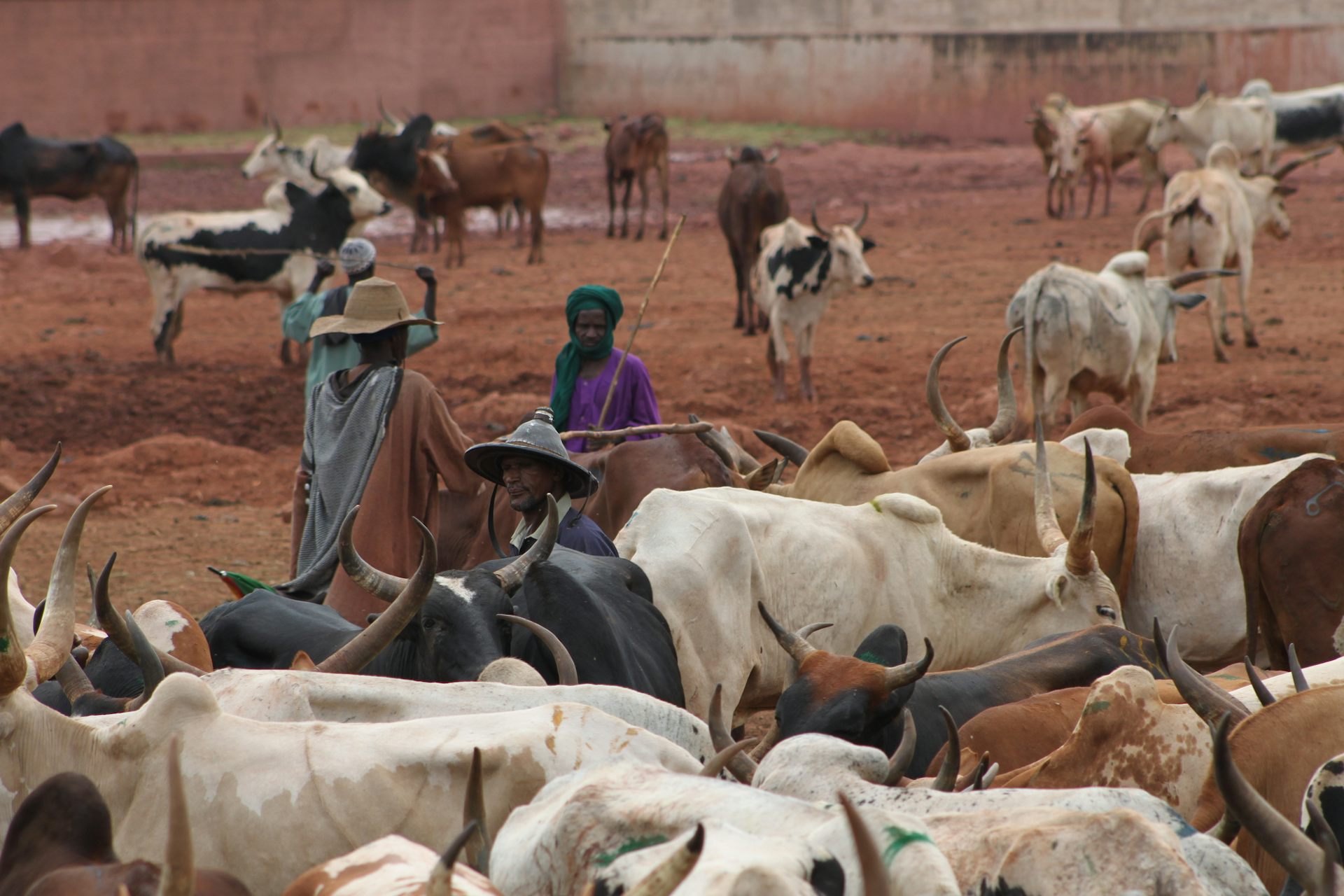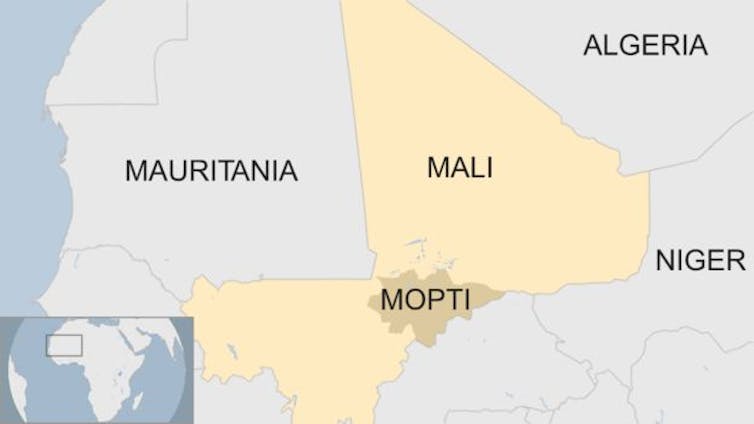
Mali’s Mopti region has seen a drastic rise of violence since 2015. Last year at least 202 civilians were killed in 42 incidents. In March this year more than 150 were killed in attacks against two villages in this central Malian region.
The attack on the Mopti region was launched by alleged Dogon hunters. The Dogon are one of the largest ethnic groups in the region.
Most of those killed in Mopti were from the Fulani ethnic group. Also among the targets were staff involved in demobilisation, disarmament and reintegration of local “self-defence groups” stationed in one of the villages.
The killings highlight the age-old conflict between the nomadic and predominantly Muslim Fulani and the generally polytheistic and sedentary Dogon and Bambara ethnic groups, in this region. The conflict has an element of the classical pastoral-sedentary conflict and an element of religious friction built into it.
Contributory factors
Yet, there are other factors contributing to what is an increasing tension between the ethnic groups. Pastoral-sedentary conflicts are not new. A weak Malian state prompted local ethnic communities to organise armed self-defence groups that also at times acted offensively. In a situation of mutual distrust, fear could easily lead to violence and aggressive action.
Other factors have fuelled tension and violence. Human geographer Tor Arve Benjaminsen and others suggest that agricultural expansion has limited pastoralist mobility and access to some of the Fulani’s traditional pastures. For example, rice cultivation has encroached on traditional Burgu pastures (semi-aquatic tropical grass used for food). Additionally, new dams on the Niger River have changed the flood pattern leading to the decline of the Burgu pastures.
Land disputes within communities are also fuelling conflict. This can be seen in the light of the weakening of traditional mediation structures that is less and less successful in ending such conflicts. And the influx of small arms from the 1990s and onwards has made land conflicts more deadly, leading to a cycle of retribution between ethnic groups.
To make matters worse, the central government is either unwilling or unable to punish communal violence. The central Malian government previously used local militias as agents when unable or unwilling to provide local security. This has contributed to local insecurity and led to distrust between locals and the government. In this setting local militias are easily tempted to bring in new allies – including jihadists.
Government delegation of power to local militias, combined with communities in need of allies in local conflicts and the absence of local security, present opportunities for jihadists to enter a new area and gain success, finances and recruits.
The setting also creates difficulties for international actors trying to stem their influence. The West, for instance, almost never engages in local reconciliation and rural security. It focuses mostly on the destruction of jihadist affiliated militias.
As I argue in my new book, dynamics like these are similar to those in other areas in Africa that have provided fertile breeding grounds for jihadists in the past.

The Fulani and jihadists
The Fulani started joining the jihadists when they gained control of the north of Mali in 2012 and 2013. For example, nomadic Fulani from the Douentza region joined Movement for Oneness and Jihad in West Africa training camps in Gao. Others joined Ansar Dine. But many returned to Mopti from Northern Mali when the jihadists lost territorial control.
Today, the Dogon and Bambara routinely accuse the Fulani of allying with the Makina Liberation Front, also known as the Katiba Macina, which forms part of the wider al Qaeda affiliated Jama’at Nusrat al-Islam wa-l-Muslimin.
On the other hand, Fulanis claim they are stereotyped by their enemies as jihadists. But it’s important to note that the Macina Liberation Front, led by the charismatic Amadu Koufa, routinely uses pro-Fulani rhetoric. Koufa also refers to a Fulani golden age, and a reestablishment of the historic Macina caliphate. He also recently reemerged in a jihadist video mocking France and Mali for claiming he was dead.
Further north, outside Mopti in the Menaka region, the Islamic State in greater Sahara has also injected itself in local conflicts supporting Fulani sub-tribes. Islamic State forces in Menaka, engage in cattle rustling and cattle “protection” for locals. Further south this element is also there in Ibrahim Dicko, the leader of the Burkina Faso-based Ansarul Islam. He similarly plays on the Fulani’s grievances against the central government.
This picture is further complicated by conflicts among the Fulani and by the Islamic State at times choosing allies who are rivals of the Fulani.
Downward spiral
For the locals in Mopti, the jihadists are very real. Not all of them are from Macina and some sign their attacks in the name of other jihadist partners. Many attacks have no groups taking responsibility for them.
The labels are fluid and the borders between jihadism and self-defence are blurred. Ethnic groups often provide recruits to many different armed groups. These groups actively undermine the state’s already weak justice system, and the increased insecurity hinders both business, general travel and farming.
This contributes to the downward spiral by increasing the impact of the root causes of Mopti’s problems.![]()
Stig Jarle Hansen, Associate Professor of International Relations, Norwegian University of Life Sciences
This article is republished from The Conversation under a Creative Commons license.

